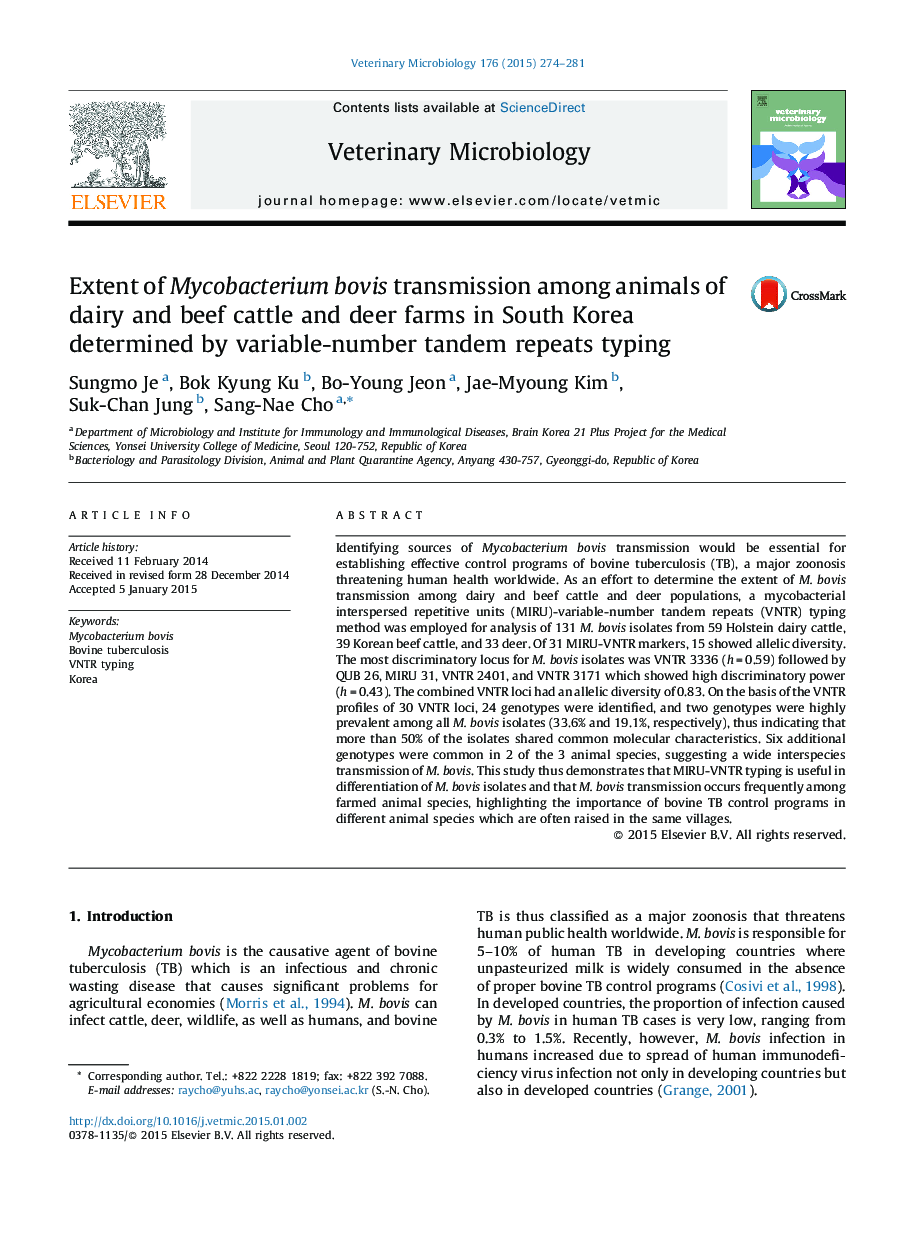| Article ID | Journal | Published Year | Pages | File Type |
|---|---|---|---|---|
| 5799993 | Veterinary Microbiology | 2015 | 8 Pages |
â¢VNTR typing is useful in understanding phylogenetic relationship of M. bovis isolates.â¢Fifteen VNTR loci are recommended for molecular epidemiology of M. bovis infection.â¢M. bovis are being transmitted frequently among farmed cattle and deer.â¢We emphasized importance of M. bovis eradication program in all farmed animal species.
Identifying sources of Mycobacterium bovis transmission would be essential for establishing effective control programs of bovine tuberculosis (TB), a major zoonosis threatening human health worldwide. As an effort to determine the extent of M. bovis transmission among dairy and beef cattle and deer populations, a mycobacterial interspersed repetitive units (MIRU)-variable-number tandem repeats (VNTR) typing method was employed for analysis of 131 M. bovis isolates from 59 Holstein dairy cattle, 39 Korean beef cattle, and 33 deer. Of 31 MIRU-VNTR markers, 15 showed allelic diversity. The most discriminatory locus for M. bovis isolates was VNTR 3336 (h = 0.59) followed by QUB 26, MIRU 31, VNTR 2401, and VNTR 3171 which showed high discriminatory power (h = 0.43). The combined VNTR loci had an allelic diversity of 0.83. On the basis of the VNTR profiles of 30 VNTR loci, 24 genotypes were identified, and two genotypes were highly prevalent among all M. bovis isolates (33.6% and 19.1%, respectively), thus indicating that more than 50% of the isolates shared common molecular characteristics. Six additional genotypes were common in 2 of the 3 animal species, suggesting a wide interspecies transmission of M. bovis. This study thus demonstrates that MIRU-VNTR typing is useful in differentiation of M. bovis isolates and that M. bovis transmission occurs frequently among farmed animal species, highlighting the importance of bovine TB control programs in different animal species which are often raised in the same villages.
